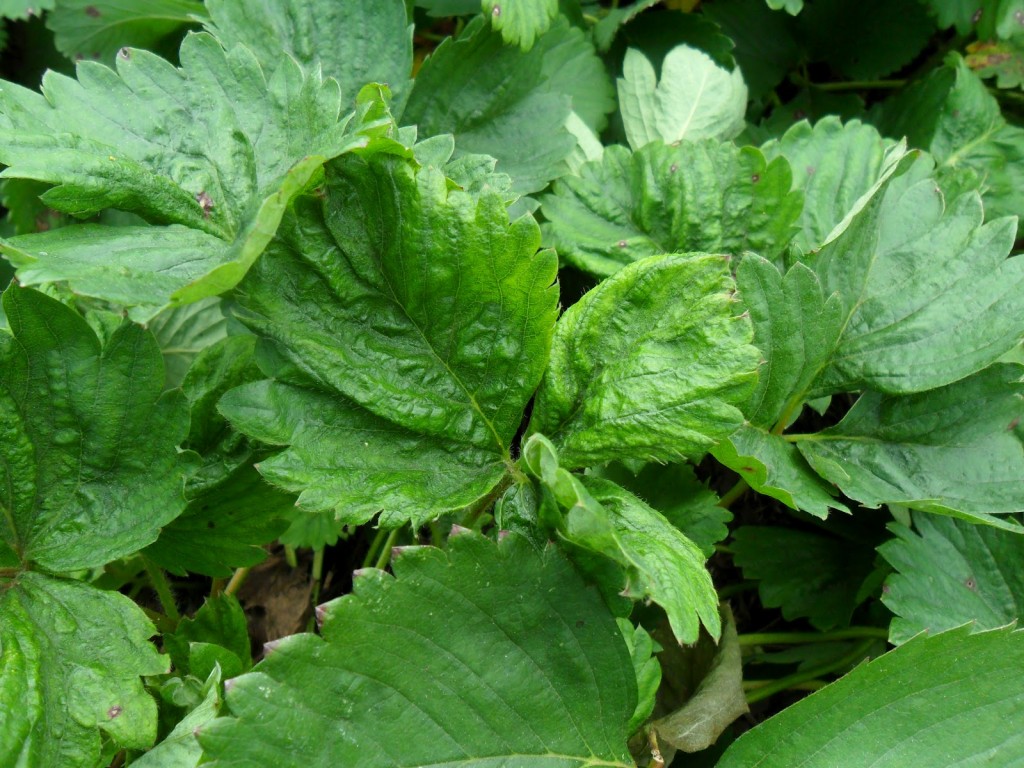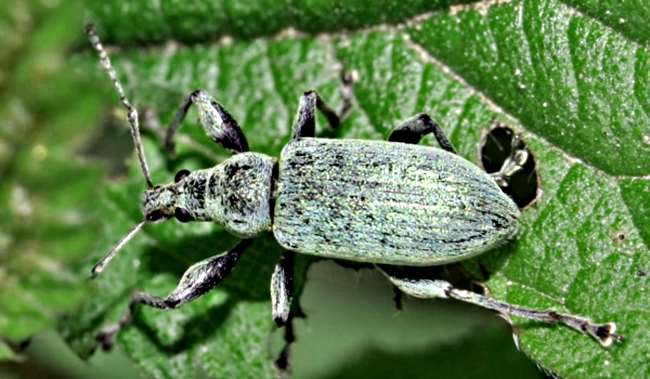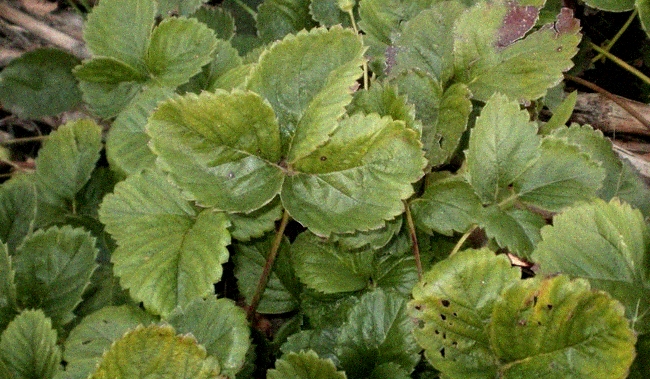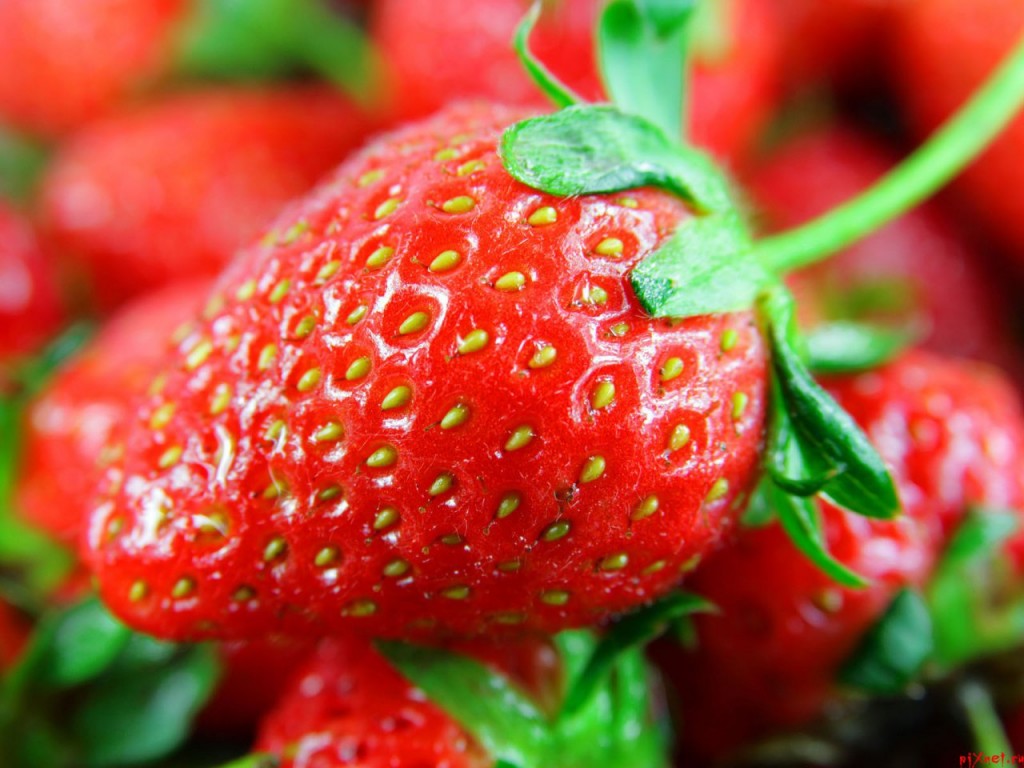What is the danger of a tick on strawberries and how to deal with it
Content
Why are they dangerous?
Strawberry mites are the most dangerous parasites. The danger lies in the fact that the ticks are very small and it is quite problematic to identify them on bushes, even when viewed with a magnifying glass.
The strawberry mite is common in North America and Europe. As a result of his activity, the current harvest of berries can be completely destroyed. At the same time, there is a high probability that the fruits of the next season will suffer. This is due to the fact that the tick is capable of disrupting the growth of flower buds until the end of summer.
Many experts have found a pattern that the older the strawberry plantings are, the more harm this parasite can cause. It carries the maximum danger for 3-4 year old plants.
Infection of the plantation occurs when infected seedlings are planted. Also, the transfer of larvae is possible through the shoes and clothes of people. Successful reproduction of insects occurs when humid and warm weather sets in. Due to the rapid dehydration in direct sunlight, which leads to the rapid death of ticks, they prefer to live on young bushes, under the lower leaves, as well as on the soil under plantings.
Due to the short life cycle (larvae become sexually mature a week after hatching), tick populations can increase exponentially during one growing season. The peak of the population and the maximum harmfulness of insects occurs in August-September. But already in October, pests go into the soil for wintering.
Such a mite is practically not detected visually, but its appearance can be calculated by the state of the strawberry. You can identify the presence of ticks on strawberries by the following signs:
- underdevelopment of the bushes;
- the presence of small and wrinkled leaves that have an abnormal figure at the edges;
- a silvery film appears below the leaves;
- most leaves become yellowish instead of green;
- the berries dry out without having time to ripen;
- the plantation freezes out.
As a result of their activity, mites inflict very severe damage on strawberries, which negatively affects the yield of the entire plantation.
Types of ticks
The mite that can be found on strawberries is of two types:
- transparent strawberry. This species is found in those areas that are well moisturized. The strawberry mite begins to show activity in early spring, when the air warms up to + 13 degrees. Having spread over strawberry and strawberry plantings, such a mite sucks out all the juices from young leaves;
- ordinary spiderweb. This type of parasite prefers drier and well-warmed land plots by the sun. The spider mite is also active in early spring, but appears somewhat earlier than its strawberry counterpart. In order for the spider mite to actively reproduce, an air temperature of + 12 degrees is required. A feature of the vital activity of such ticks is the appearance of cobwebs on the affected leaves, which is where the name of the insect came from.
Both spider mites and strawberry mites feed on the sap they extract from plant leaves. This leads to twisting of the leaf blade, its drying and falling off.
Video "Treatment of a site from a tick"
How to fight
If you identify even the slightest symptoms of the presence of a strawberry or spider mite on strawberry bushes, you must immediately begin to fight it. Otherwise, your plantation can significantly lose in the level of productivity or even perish.
If you have identified these insects on your plantation, you need to know that it will no longer be possible to completely destroy them. This is due to the fact that the mites are concentrated in difficult places to process. But you still need to fight them in order to contain their population.
The most common method of control is the introduction of predator ticks on the plantation. This method is applicable at any time of the year. The introduced predatory mite can reduce the number of parasites quite well.
In addition to using a predatory mite, there are the following folk methods of struggle:
- after harvesting, it is necessary to cover the beds on which there are infected bushes with plastic wrap (like a greenhouse). This will prevent warm air from entering. When the temperature in the bed reaches 60 degrees, we remove the film and cut off the affected plants cleanly (to the very root). After this, the beds should be covered with humus;
- Onion infusion has proven itself well in the fight against ticks. To prepare this infusion, you need to take about 200 g of husk from an ordinary onion and pour 10 liters of water. The resulting solution should be infused for 5 days. Then it should be filtered and immediately start processing the affected bushes. Onion infusion should be used at the very beginning of the growing process. It is also used twice after harvesting from the harvest area. Please note that after processing, the beds must be covered with plastic wrap for several hours.
These are the most common methods of struggle. But some gardeners, instead of onions, prepare an infusion of garlic. To prepare it, grind 200 g of garlic heads (fresh) and pour 10 liters of water. Then mix the resulting solution, filter and spray the affected strawberries with it.
If ticks hit several neighboring areas at once, they must be dealt with at the same time in order to minimize the risk of re-colonization. Also, many use strong chemicals, but still none of the above methods give a 100% result.
Prophylaxis
The best method of control, thanks to which the appearance of ticks on strawberry bushes can be minimized as much as possible, is prevention. To prevent the tick from appearing, gardeners take the following preventive measures:
- using only clean and proven seedlings;
- The strawberry area should be well lit throughout the day. Moreover, it should be well ventilated with cool air;
- avoid high humidity or dryness in areas where this crop is grown;
- loosening the soil around the bushes;
- timely removal of weeds;
- removal of old whiskers and leaves;
- making a balanced top dressing;
- planting after harvest;
- destruction of all infected and diseased bushes.
Also, every four years, it is necessary to transplant strawberries to a new place of growth. Many gardeners, before planting seedlings in the soil, put it in hot water for a quarter of an hour (the water temperature is no more than 48 degrees). It is necessary that the water completely covers the planting material. Then it is placed in cool water (10-15 degrees).
By adhering to the recommendations for preventing the appearance of ticks, you can rest assured about the quality and volume of the crop taken from the strawberry plantation. The main thing to remember is that if ticks still hit the planting, be sure to start fighting them immediately.
Video "Getting rid of spider mites quickly"
To forget about this pest once and for all, watch the video below. The expert talks about effective methods of struggle.





